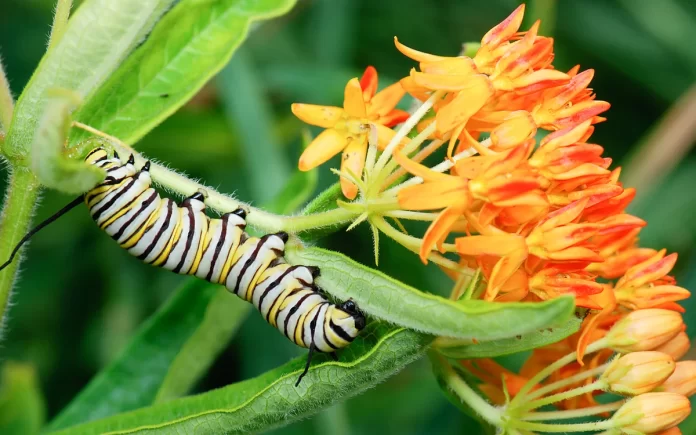Caterpillars are soft and hairy creatures. They are the larval stage belonging to the family of Lepidoptera order. They are also referred to as eruciform body-shaped larvae. They are the young offspring of moths and butterflies. The word caterpillar is derived from the Latin word catta pilosa, which means“hairy cat.” Hairy larvae are recognised as caterpillars but there are several caterpillars with bare skins that are often confused with worms, such as the cabbageworm and armyworm.
Learn more about Caterpillars
You must have noticed caterpillars with a small head and elongated body with various segments into approximately 12 or 13 parts. They have three sets of true legs. In the first three segments right behind the head, they are hard and joined to the body. These legs are accompanied by the soft legs attached to the rest of the body. The legs shed off when they become adult butterflies. Caterpillars can be of different sizes from less than an inch to a few inches. The largest Caterpillar can be 4 inches long and the smallest caterpillar is never seen more than 0.25 inches long.
Caterpillars are the young version of moths and butterflies. They do seem to be very tiny but they have a strong appetite to feed themselves. They feed on the leaves of various types of plants. However, some species of caterpillars also eat insects and other small animals.
Their heavy diet can cause damage to various crops, trees, hardwood trees, shrubs and ornamental plants. They cause damage to the plant by eating their leaves and the grains from the crops. Not only this the fecal discharge by caterpillars causes stains on the leaves that make the plant unsellable.
Let’s learn more about the appetite of caterpillars.
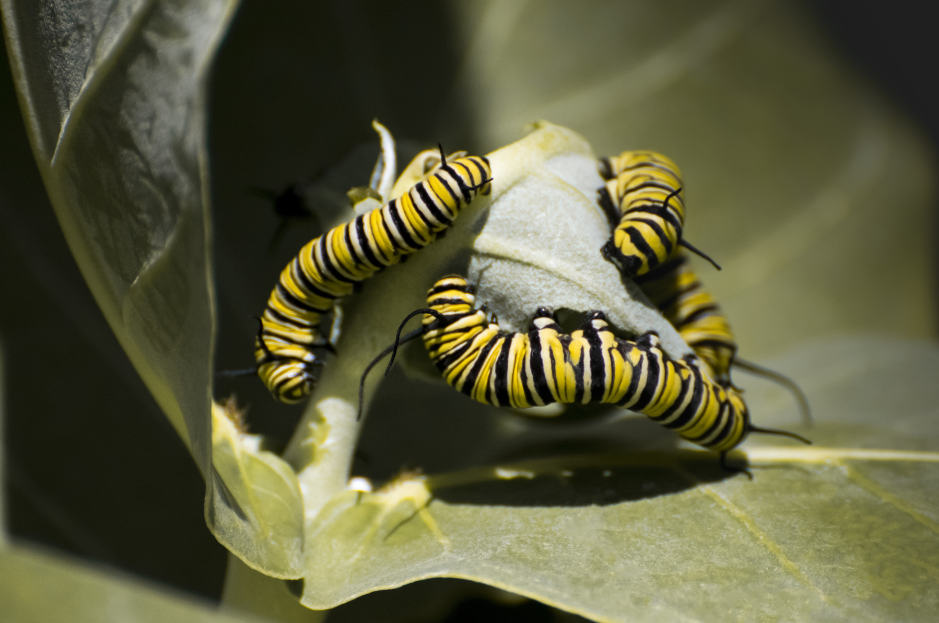
What Do Caterpillars Eat
The few-inch-long caterpillars appear very tiny, but they have a very interesting diet. You might have noticed fictional caterpillars eating processed and junk snacks. But the reality is different. Most of the caterpillars eat only plant-based food sources and there are other caterpillars also who eat aphids and insects only.
Adult butterflies and moths lay their eggs on the leaf of the plant. Where food is abundant, they especially lay eggs there. On the food plant where the chances of survival are best, they get a ready source of food as soon as they hatch out from the eggs.
Read here to know what do ladybugs eat.
Below is a list of a few things that show what do caterpillars eat.
Flowers
Butterflies lay eggs on flowering plants. When the larvae hatches out it begins to eat the leaves of plants. But some species just do not eat only the leaves of the plant. They also disturb the buds, seeds and blooming flowers. Star wort caterpillars especially enjoy feeding on flowers and buds of the plant; the larva eats the flowers for about 3 weeks after they pupate.
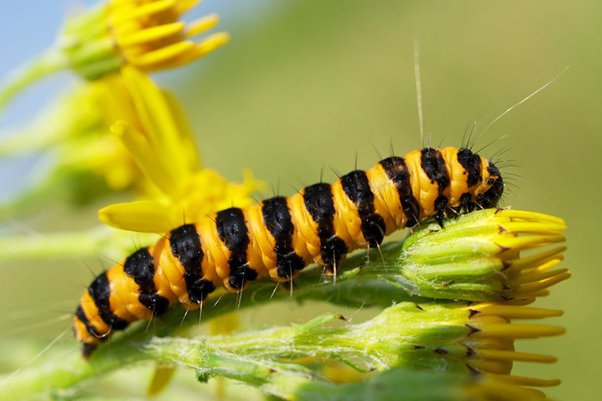
Honeycomb
There are very few species of caterpillars that feed on honeycombs. But few caterpillars have a sweet tooth. The wax moth adult makes an enemy of beekeepers. They invade the hives and lay their eggs and as soon as the larvae hatch out they feed themselves on the honeycomb.
Grass
It is the most common food liked by the caterpillars of butterflies. It’s an easy food to find and consume. Gatekeeper, meadow brown and skipper family caterpillars get good nutrition from wild grasses.
Bark and Twigs
There are a few species of caterpillars that survive on barks and twigs. The caterpillars of the lunar hornet moth bore into hollow trees where they find food in the wood. Caterpillars do not cause much damage to the trees, but when they are cut down you can easily find small burrows in the wood that are wider than the width of your little finger.
Animal Waste
There are caterpillars who survive on dead animals. They love chewing the skins of dead birds, mice, owl pellets, and guano. They are nature’s cleaners
Ants
The large blue butterfly relies on red ants for its food source. The Young caterpillars feed on flowers of wild thyme or marjoram.
Moss and Lichen
In the lichen moth case, caterpillars feed on lichen and blue-green algae, the species of Dingy, Buff, Common, Muslin, Rosy and Scarce Footman moths. They feed on lichens found on tree trunks, fence posts, old walls, various mosses and decaying vegetable matter.
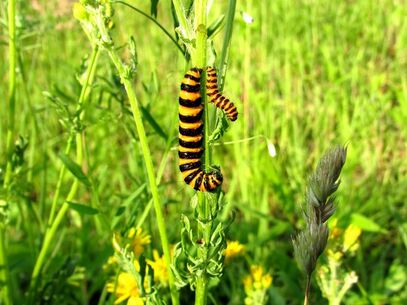
What The Caterpillars Usually Eat When In Captivity
There are people who love to pet a caterpillar but don’t know what their caterpillar eats. You must try to identify its food preferences. It may love to feed on a particular plant or host a variety of plants. If you are raising a caterpillar in captivity you need to pull up your socks to find what he would love to eat. You can also try to feed with the leaves of the plant or the foliage plant. You can’t just captivate a caterpillar and feed whatever you wish. You must try to identify what they like, and look for the area where you find it. Now try to feed the leaf of a plant from the place you found it. It is not necessary that the caterpillar you found is really in a larval stage; it could be one that is going to pupate and doesn’t want your food at all.
What is The Universal Caterpillar Food
There are food choices for everyone. The caterpillars have too. They love eating oak leaves. More than 500 species of caterpillars feed on oak leaves even when they are adult butterflies or moths. They feed on oak leaves ,if you have a caterpillar you can try feeding it with oak leaves. There are other food choices that are preferred by many caterpillars such as cherry, willow, or apple leaves.
You can also host plants for caterpillars if you are a nature lover and want to have a garden full of butterflies, then you must host plants for caterpillars and nectar plants for butterflies. This will attract butterflies to your garden and may often visit your garden to lay eggs and the larva can find food abundance. A nicely designed garden will always attract butterflies to your garden.
What Are The Things Caterpillars Feed Upon
Caterpillars are the young of butterflies and moths. They love to feed lavishly and quietly, they survive on plant matter, leaves, grasses and flowers. This is a sufficient diet for them although they also feed on red ants, aphids and other small insects that are in their reach. Caterpillars are herbivores and omnivores.
You may find more about what do caterpillars eat with the below-mentioned list:
- Leaves
- Flowers
- Fruits and vegetables
- Bark and twigs
- Grass
- Honeycomb
- Fur/hair/feathers
- Animal carcasses and waste
- Red ants
- Other caterpillars
The staple diet of caterpillars is moist leaves and soft green plants. This is how caterpillars get the water they need.
What Food Does The Hungry Caterpillar Eat?
Caterpillar loves to eat the leafs of various plants, seeds, barks and twigs; but there are books that suggest that they also enjoy the feast of apples, pears, plums, oranges, strawberries, chocolate cake, ice cream, a pickles, swiss cheese, a lollipop, cherry pie, sausage, a cupcake, and watermelon.
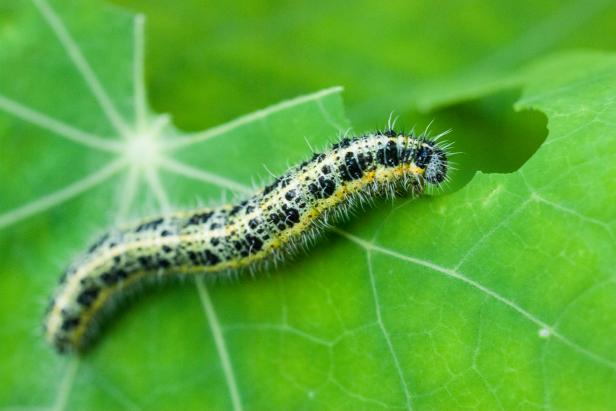
How Long Do Caterpillars Live For?
The life of a caterpillar is about 2 to 5 weeks. Their lifetime also depends on the species and the time of the year it is born. Once a caterpillar is hatched it could survive for 2 to 5 weeks. It is the most dangerous stage of an insect’s life. This is due to the high mortality rate because of the presence of predators, weather conditions and diseases.
What Did The Caterpillar Eat First?
As soon as the Caterpillar hatches out of the egg they immediately begin to eat the egg shells as it is a complete nutrition for them. The other species of caterpillars eat leaves of a plant. There are some other species of caterpillars that are observed as soon as the egg is about to hatch. It begins to eat the shell of the egg so that they may make their way out of the egg.
Read more to know what do fireflies eat.
Why Is The Caterpillar Hungry?
Caterpillars have voracious appetite; they eat a lot during their lifetime. They eat a lot of leaves of the plant for itself, for the butterfly it is going to be and for the eggs that a butterfly will lay. That’s why a Caterpillar is always hungry and can be found feeding itself on leaves and crops.
There are variety of caterpillars in the ecosystem lets learn about different caterpillars and what do they eat
Pipevine Caterpillars
They are found in the warm climatic conditions especially in Woodlands and meadows. They can be located in the southern half of the United States and stretch to southern Mexico. The adult butterfly lays eggs under pipevine leaves. Pipevine leaves are toxic to many animals but caterpillars adapt their characteristics by feeding on its host plant in its larval stage. Caterpillars are black with red projections and contain spots on their body. You must be wondering what these tiny caterpillars eat in the larval stage . They prefer to feed themselves on the leaves of birth worts and dutchman spikes. They also eat the leaves and seed pods of the pipevine plant, the adult butterfly feeds on the nectar of the flowers and also seeks minerals from the puddles. They also feed on the flowers of the pipevine plant.
Spicebush Swallowtail Butterfly Caterpillar
They are harmless caterpillars. They feed on sweet bay spice bushes and sassafras as well as tulip trees. They are common black swallowtail butterflies especially found in North America. It derives its name from the common host plant. The spicebush can feed themselves 2 to 4 times a day very efficiently on the same plant. Spicebush swallowtail caterpillars survive on the leaves of the host plants as larvae and drink nectares and become adults. At first look these green caterpillars look like small snakes or tree frogs because of their clever disguise so that they can get rid of predators.
Hickory Horned Devil (Regal Moth) Caterpillar
It is the giant caterpillar. It is one of the largest caterpillars found in North America. They can grow over 5 inches in length. They are harmless caterpillars they are found mainly in the Eastern US forest but what do these caterpillars eat well? They feast on leaves of Hickory ash persimmon sycamore and walnut tree.
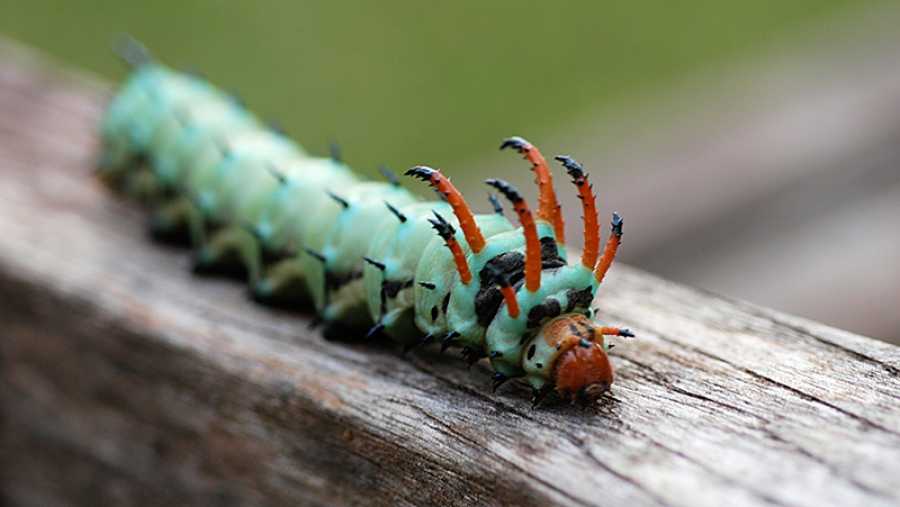
Monarch Butterfly Caterpillar
It is known for its large size. It is orange and black. They are found in North Central and South America but they are also located in Australia, India and other locations. They are easily recognizable caterpillars due to the presence of vertical stripes of black white and yellow-green; the adult butterfly lays the eggs on milkweed; it is the host plant for the monarch butterfly. They exclusively feed on the milky juice of milkweed plants. The toxic chemical present in the milkweed makes it tasteful for its predators. The larvae of the Monarch butterfly would not be able to sustain or develop properly; the larvae would not be able to develop into a butterfly unless they feed on milkweeds. Monarch larvae, or caterpillars, feed exclusively on milkweed leaves.
Puss (Southern Flannel Moth) Caterpillar
Flannel moth caterpillars are very attractive; they feed on many trees and shrubs. They are commonly seen in oak and elm trees.
Puss caterpillars develop into the southern flannel moth; they are very attractive with yellow, orange, and creamy fur on their wings, legs, and bodies. They hatch out from cocoons and feed themselves on the leaves of various species of passion flowers. It is a nutritious food for the caterpillars but also protects them from their predators.
Any creature born on earth has a life and goes through various stages of life. Butterflies are beautiful insects and everyone gets attracted to the adult butterflies, they lay clusters of eggs on plant leaves when the egg hatches the Caterpillar begins to find food and feed itself on plants. You can find Caterpillars munching happily and silently on leaves, barks and twigs. The purpose of a Caterpillar is to eat food, grow bigger and gain good nutrition for its further stages of life.

